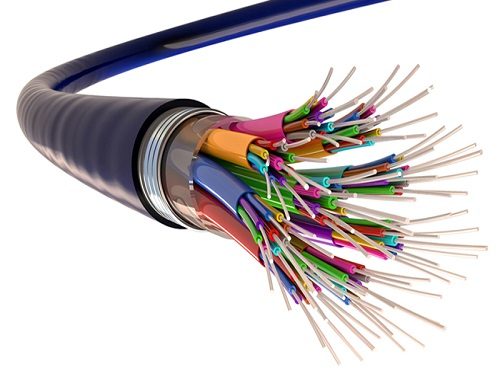In the field of modern communications, fiber optic cables have become the core carrier of information transmission due to their excellent performance. Compared with traditional copper cables, their advantages in speed, bandwidth, and reliability are irreplaceable, profoundly changing people's communication and lifestyle. This article will elaborate on key aspects of fiber optic cables, including their definition, working principle, types, selection methods, installation, and maintenance.、

I. Definition and Working Principle
What is a Fiber Optic Cable?
A fiber optic cable is a transmission medium with thin glass or plastic optical fibers as the core, covered by a protective layer, capable of efficiently transmitting optical signals.
Working Principle
Fiber optic cables work based on the principle of total internal reflection of light: the refractive index of the core is higher than that of the cladding. When an optical signal enters at an angle greater than the critical angle, it undergoes continuous total reflection at the interface and propagates along the core. At the transmitting end, electrical signals are converted into optical signals and input, and at the receiving end, they are converted back into electrical signals, achieving high-speed transmission with low loss and anti-interference.
Common connector types include SC, LC, ST, and MTP/MPO, etc. They each have their own characteristics in terms of insertion loss, installation difficulty, and durability. Selection should be based on specific application scenarios to ensure signal quality and network performance.
II. Main Types
Single-mode Fiber
The core diameter is 8-10μm, allowing only one light mode to transmit. It has extremely low loss, long transmission distance, and large bandwidth, suitable for long-distance high-speed communication. Divided into OS1 (indoor) and OS2 (outdoor and long-distance), it is used in long-distance telecommunications, data center interconnection, etc.
Multi-mode Fiber
The core diameter is 50-62.5μm, allowing multiple light modes to transmit simultaneously. Due to modal dispersion, its transmission distance and bandwidth are limited, suitable for short-distance scenarios. It is mainly used in local area networks of office buildings and campuses. Models OM3 and OM4 are compatible with high-bandwidth protocols such as Ethernet.
III. Selection Methods
Comprehensive considerations are required:
- Transmission Distance and Bandwidth: For long-distance and high-bandwidth, single-mode is preferred; for short-distance and medium-bandwidth, multi-mode is more economical.
- Environmental Conditions: For outdoor use, choose weather-resistant and moisture-proof types; in strong electromagnetic environments, armored cables may be needed.
- Cost and Compatibility: Single-mode has a high initial cost but high long-term cost performance; multi-mode has low deployment cost. Meanwhile, it is necessary to match the connector types and splicing methods of existing equipment.
Bandwidth determines the data transmission capacity per unit time. When selecting, it is necessary to combine application requirements to ensure efficient operation of the system.
IV. Installation and Maintenance Skills
Installation Best practices
- Strictly follow the specifications and maintain the minimum bending radius to avoid excessive bending.
- Reasonably plan the routing and add protective devices to prevent tension and environmental damage.
- Conduct multiple tests during installation to check for high attenuation and reflection problems, and clean and handle connectors.
- Record information such as routing and joint positions for convenient subsequent maintenance.
Maintenance Skills
- Regularly use professional equipment to detect signal loss and system integrity.
- Clean connectors according to a fixed schedule using special cleaning tools and methods, and test after cleaning to ensure effectiveness.
- Detailed records of maintenance work, including test results and cleaning time, help evaluate network status and predict maintenance needs, reducing operating and life-cycle costs.
As the cornerstone of modern communications, the importance of fiber optic cables is self-evident.
FiberWDM has established an excellent reputation in the fiber optic cable industry by virtue of its superior product performance, customized services, strict quality control, and comprehensive after-sales support. Whether it is building large-scale communication networks or upgrading small local area networks, FiberWDM can provide you with high-quality and reliable fiber optic cable solutions, helping your communication business reach new heights.